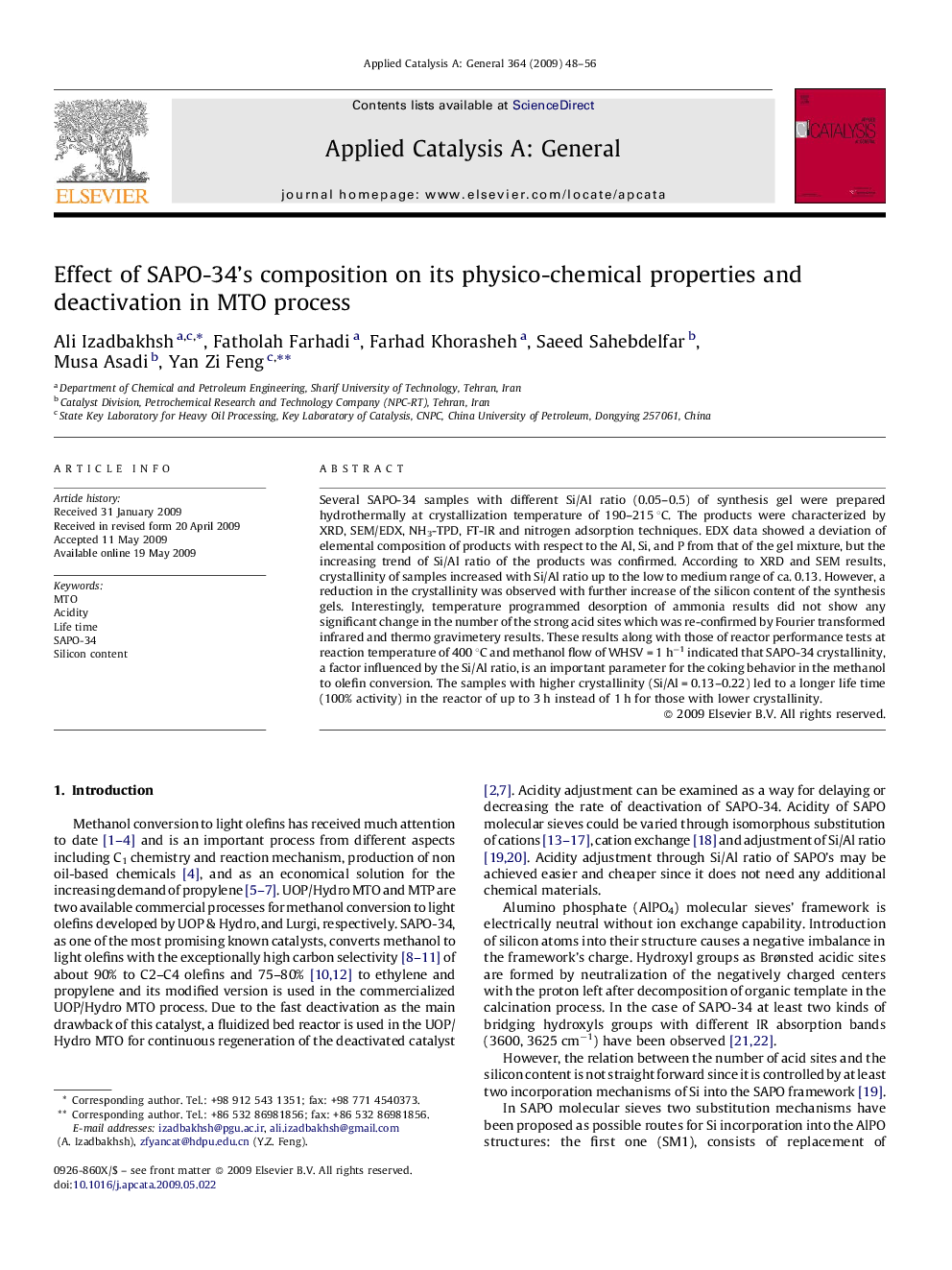| Article ID | Journal | Published Year | Pages | File Type |
|---|---|---|---|---|
| 42861 | Applied Catalysis A: General | 2009 | 9 Pages |
Several SAPO-34 samples with different Si/Al ratio (0.05–0.5) of synthesis gel were prepared hydrothermally at crystallization temperature of 190–215 °C. The products were characterized by XRD, SEM/EDX, NH3-TPD, FT-IR and nitrogen adsorption techniques. EDX data showed a deviation of elemental composition of products with respect to the Al, Si, and P from that of the gel mixture, but the increasing trend of Si/Al ratio of the products was confirmed. According to XRD and SEM results, crystallinity of samples increased with Si/Al ratio up to the low to medium range of ca. 0.13. However, a reduction in the crystallinity was observed with further increase of the silicon content of the synthesis gels. Interestingly, temperature programmed desorption of ammonia results did not show any significant change in the number of the strong acid sites which was re-confirmed by Fourier transformed infrared and thermo gravimetery results. These results along with those of reactor performance tests at reaction temperature of 400 °C and methanol flow of WHSV = 1 h−1 indicated that SAPO-34 crystallinity, a factor influenced by the Si/Al ratio, is an important parameter for the coking behavior in the methanol to olefin conversion. The samples with higher crystallinity (Si/Al = 0.13–0.22) led to a longer life time (100% activity) in the reactor of up to 3 h instead of 1 h for those with lower crystallinity.
Graphical abstractCrystallinity of SAPO-34 samples with different Si/Al ratio (0.05–0.5) of synthesis gel showed a maximum at low to medium range of Si/Al ratio around 0.13. Interestingly, NH3-TPD, FTIR and TG results did not show any significant change in the number of the strong acid sites. Performing reactor tests indicated that SAPO-34 samples with higher crystallinity led to a longer life time in the reactor.Figure optionsDownload full-size imageDownload as PowerPoint slide
